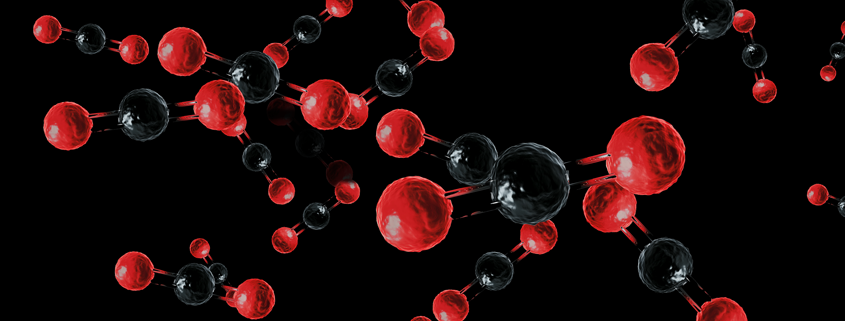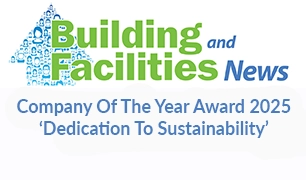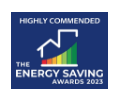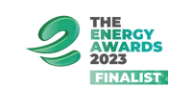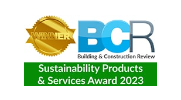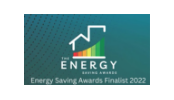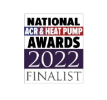The transition to net zero and a renewable future necessitates a multi-pronged approach across various sectors. In the commercial built environment, understanding the challenges and advantages of tackling three key areas stand out: retrofit, renewables, and sustainable refrigerants. These are the three Rs of net zero that need to be learned if we are to successfully decarbonise the built environment in the UK.
In this final part on the Three Rs of Net Zero, Adveco turns its attention to the importance of safe, effective refrigerants for heat pumps…
Part 3 – Sustainable Refrigerants
Heat pumps leverage the well-understood refrigerant cycle used for more than a century in devices such as fridges and freezers, only reversing the process to generate heat rather than cold. This four-part cycle within the heat pump is dependent on a chemical refrigerant. In the evaporator, the refrigerant absorbs heat from the surrounding air (in heating mode) or from the indoor air (in cooling mode). This heat causes the refrigerant to evaporate into a low-pressure gas. The gaseous refrigerant is then compressed by the compressor, significantly increasing its pressure and temperature. In the condenser, the high-pressure, high-temperature refrigerant releases heat to the surrounding environment (in heating mode) or to the outdoor air (in cooling mode). This heat rejection causes the refrigerant to condense back into a liquid state. Finally, the liquid refrigerant passes through an expansion valve, where its pressure and temperature drop dramatically. This low-pressure, low-temperature liquid is then ready to re-enter the evaporator and start the cycle again.
The more efficient the refrigerant, the greater potential to deliver consistent higher temperatures from the heat pump for less effort, so less electrical input required to the heat pump. Higher efficiency refrigerants also mean less is potentially required in the unit to achieve desired heating output, so the heat pump can be more compact and less costly to purchase, install and operate.
So, choosing a heat pump with the right refrigerant is an important facet of any sustainability planning. The choice of refrigerant is going to depend typically on which best maximises the heat pump’s efficiency to minimise energy consumption. In addition, and increasingly important is the prioritisation of refrigerants with low global warming potential (GWP) and zero ozone depletion potential.
This need has seen a shift in refrigerant preferences, with a gradual phasing out of high-GWP refrigerants with hydrofluorocarbons (HFCs) in favour of low-GWP alternatives. This mostly recently led to the move away from refrigerant R410A, to R32 which offered extremely safe, high-efficiency operation with a much lower GWP. R32 is the current recommended refrigerant of choice for DHW due to its consistent ability to maintain temperatures suitable for system preheat. Initially developed a century ago, R32 was conceived as a safe, non-flammable refrigerant, however, it and its more recent derivatives are still considered to be potentially harmful to the environment should they be leaked. As a result, the EU is considering stricter regulations on refrigerants such as R32, with the intent to phase out their use in the near term. However, it’s important to note that this is still under discussion, and a complete ban on R32 may not be implemented. If it does proceed the expectation is that the UK would likely follow this lead.
This does leave a question regarding which refrigerant will be the future choice. The process of developing and testing new refrigerants has taken considerable time, with variants of known refrigerants taking years to be refined before they can safely be used in products. The heat pump industry has invested heavily in the shift to R32, and early curtailment of its use is certainly problematic. Focus is therefore turning to the utilisation of natural refrigerants such as carbon dioxide (CO₂), hydrocarbons (propane) and water, which have negligible or zero GWP.
Heat pumps using CO₂ or propane are available and claim high output temperatures, in excess of 70°C. To achieve this CO₂ based systems will operate at extremely high pressures, requiring specialised and robust components, which can increase the size, costs and complexity of the heat pump. They also best work within narrower windows of ambient temperature compared to refrigerants like R32 which can maintain consistent heat output when external temperatures drop lower than -20°C. Commercial CO₂ heat pumps also notably struggle when trying to keep the return temperature below 30 degrees. That is fine if you have continuous high demand, but most commercial systems need to meet peak period demands but also adapt to little to no demand outside those peaks. It’s these periods where the efficiency of CO₂ heat pumps falls away and if the return temperature gets too high the coefficient of performance (COP) drops exponentially, and the unit eventually shuts off because it cannot work anymore.
Propane offers greater efficiency than CO₂, so long as the heat pump is correctly charged with enough propane. Manufacturers have recorded high COPs, notably at lower flow temperatures, so it is important to review the SCOP at intended higher working temperatures to gain a true idea of a heat pump’s efficacy. Ambient temperature, flow temperature, and other operating conditions can all significantly impact efficiency. Propane heat pumps will address concerns over the GWP of refrigerants deployed in sustainable applications.
However, the Building Engineering Services Association (BESA) recently voiced concerns which stem from the growing adoption of propane as a replacement for high-GWP refrigerants, particularly in smaller systems. It issued a warning about the increasing safety risks associated with the use of flammable refrigerant gases like propane (R290) in air conditioning and heat pump systems. BESA emphasised the need for specialised training for all engineers working on R290 systems to ensure safe handling and installation practices.
Others have also raised concerns over the lack of regulations relating to the storage and transportation of propane heat pumps which are pre-charged at the factory. The amount of propane used in a heat pump was also a concern. It is important to note that heat pumps will incorporate considerably more propane than traditional fridges and freezers that have used the refrigerant for many years, often cited as an argument that the refrigerant has a long and proven safety record. Should a heat pump unit leak, there is a potential for an explosion of more than 15m³ based on refrigerant charge in currently available models. This means locating propane heat pumps at a safe distance from each other and other electrical devices which would drastically limit project design, especially if the intent was to place the units on a rooftop. The other concern should a unit leak is that propane, which is denser than air, will ‘pool’ and flow downwards. For rooftop installations this could result in propane travelling down drainage channels, potentially bringing it into proximity to working areas, further endangering a building’s occupants. Considering the tightening of building regulations, especially relating to fire in higher-risk buildings following the completion of the Grenville Enquiry, there must remain question marks over an unregulated application of propane as the refrigerant of choice in heat pumps for commercial buildings.
The goal is to deliver a single, sustainable technology which can meet the future demands of the commercial built estate, and finding a refrigerant which is environmentally friendly, efficient enough to deliver consistent high temperatures and safe to deploy, could, in the face of new legislation become a real challenge. The EU’s response to the proposed ban on future R32-based heat pumps is telling, it has initiated widespread plans to roll out solar thermal and solarPV systems across public buildings and is actively pursuing the same from commercial organisations. This potentially leaves the heat pump industry in a quandary and facing a huge challenge of rapidly bringing new alternatives to market. As we have indicated, for the time being, hybrid systems that successfully blend a mix of low-carbon and renewable technologies remain the most trusted and typically lower-cost option to achieve necessary operation within sustainability guidelines and building regulations.
Conclusion
Continued innovation, policy support, and widespread recognition of the need to support retrofit, renewables, and refrigerants are going to be increasingly essential to achieve a net zero built environment across the UK. Commercial and public services building owners and developers can significantly reduce their environmental impact, improve energy efficiency, and create more sustainable and resilient buildings for the future if they pay greater attention to the new three ‘R’s. Projects that address retrofit, renewables and carefully choose technology with the optimal refrigerant will be better positioned to reap the rewards of sustainability: gaining more comfortable and safer interior spaces, lower operational costs, energy independence for more robust operations which are less impacted by fluctuations in energy prices, able to avoid potential sanctions or fines under legal corporate reporting and gaining improved brand value. All whilst maintaining typically business-critical hot water supply for building operations and service offerings.
Discover more about net zero and how Adveco can support your hot water needs…

